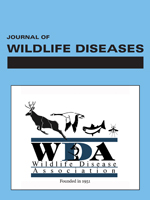During 15 July to 4 October, 1999, rabies control programs were implemented with the objective being to contain the first three confirmed cases of raccoon rabies in Canada. The strategy, called point infection control (PIC) involved the use of three tactics: population reduction (PR), trap-vaccinate-release (TVR) and oral rabies vaccination with baits (ORV), to control the spread of raccoon rabies. A total of 1,202 raccoons (Procyon lotor) and 337 skunks (Mephitis mephitis) were captured and euthanized using 24,719 trap-nights in the three PR zones around the location of the three rabies cases, near Brockville, Ontario. That represented an 83% to 91% reduction in the raccoon populations in an approximate 225 km2 area around the three rabies cases. Raccoon density in the PR zones declined from 5.1–7.1/km2 to 0.6–1.1/km2 following control. All tested specimens were negative for rabies by the fluorescent antibody test (FAT). In addition, 1,759 raccoons and 377 skunks were intramuscularly vaccinated against rabies and released using 27,956 trap-nights in an approximate 485 km2 TVR zone implemented outside of the PR zones. A total of 856 cats from both PR and TVR areas were also captured, vaccinated and released. Cost for the three PIC operations was $363,000.00 Cdn or about $500.00 Cdn/km2. To further contain the outbreak, about 81,300 baits containing Raboral® V-RG oral rabies vaccine were aerially distributed on 8 and 27 September 1999, to create an 8 to 15 km wide buffer zone (1,200 km2 area) of vaccinated raccoons immediately beyond the PR and TVR zones. This was the first time that V-RG was used in Canada to orally vaccinate free ranging raccoons against rabies. Baiting costs were $241,000.00 Cdn or about $200.00 Cdn/km2 including post baiting assessment costs. As of 31 August, 2000, thirty-five additional cases (38 in total) of raccoon rabies have occurred in the control and vaccination zones. This number is far below the level of rabies prevalence in USA jurisdictions where raccoon rabies was epizootic. In the future, PIC methodologies will continue to be used in Ontario to contain isolated cases of raccoon rabies.
How to translate text using browser tools
1 April 2001
EMERGENCY RESPONSE TO RACCOON RABIES INTRODUCTION INTO ONTARIO
Rick Rosatte,
Dennis Donovan,
Mike Allan,
Lesley-Ann Howes,
Andrew Silver,
Kim Bennett,
Charles MacInnes,
Chris Davies,
Alex Wandeler,
Barry Radford

Journal of Wildlife Diseases
Vol. 37 • No. 2
April 2001
Vol. 37 • No. 2
April 2001
Mephitis mephitis
oral vaccination
Procyon lotor
rabies
rabies control program
raccoon rabies
striped skunk




